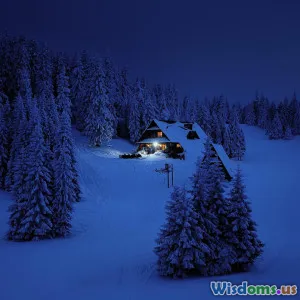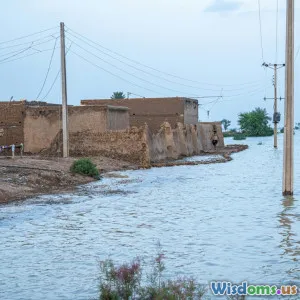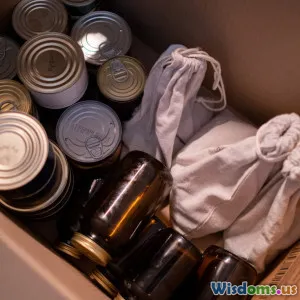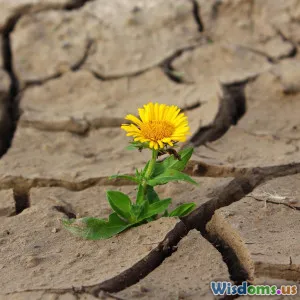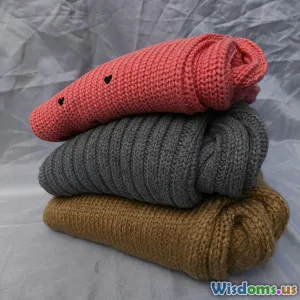
Top Five Materials for Homemade Cold Weather Blankets
14 min read Discover the top five fabrics for DIY cold-weather blankets, with evidence-based pros, cons, and crafting tips for lasting warmth and comfort. (0 Reviews)
Top Five Materials for Homemade Cold Weather Blankets
Introduction: Wrapping Up Warm—Why Material Matters
When winter’s chill settles in, nothing rivals the soothing weight and warmth of a cozy blanket. Whether you’re bracing against icy drafts in an old farmhouse, prepping for an outdoor adventure, or simply craving comfort on the couch, the right homemade blanket can elevate your cold-weather experience. But before you pick up your needles or sewing kit, one crucial question arises: what material should you use?
Not all fabrics are created equal—some trap heat brilliantly, others wick away moisture, some feel plush against your skin, while others stand up better to years of nightly cuddling. The material you choose can make the difference between a cherished heirloom and an impractical, seldom-used throw. This article reveals the top five materials for crafting homemade blankets tailored for harsh winters, backed by research, expert opinions, sustainability concerns, and practical wisdom. Ready to craft your warmest blanket yet? Let’s unveil the best options for unbeatable warmth and comfort.
1. Wool: The Classic Powerhouse
Natural Warmth That Stands the Test of Time
Wool isn’t just tradition—it’s science. Derived from the fleece of sheep and sometimes goats or alpacas, wool has safeguarded humans against cold for thousands of years. Its enduring reputation is no accident.
What Makes Wool Exceptional?
- Thermal Insulation: Wool fibers have a natural crimp, creating tiny pockets that trap air and insulate against the cold. According to the International Wool Textile Organisation, one layer of wool retains as much heat as several layers of synthetic material.
- Moisture Management: Wool can absorb up to 30% of its weight in moisture without feeling damp, helping to wick away sweat while you sleep.
- Longevity: A well-made wool blanket lasts decades. Antique military wool blankets can still be found in excellent condition today.
Real-World Example: In Norway, it is common for children, hikers, and even pets to be swaddled in wool blankets, given the harsh Scandinavian winters.
Quotes from the Experts: Catherine Shields, textile conservator at the National Museum of Scotland, observes, “Wool is so enduring that some of the world’s oldest textiles—over 2,000 years old—are made of it.”
Pros:
- Outstanding insulator
- Moisture-wicking, “breathes” well
- Durable and resilient to daily use
Cons:
- Can be itchy (superwash or merino wool is much softer)
- May shrink if washed improperly
- Usually costlier than synthetics
Crafting Tips: For a homemade wool blanket, consider using chunky knit yarns for extra loft or combine felted wool squares for a patchwork style. Always pre-wash and block your wool to minimize future shrinking.
2. Fleece: Tech-Fabric for Modern Comfort
Ultra-Soft, Lightweight, and Affordable
If you’ve ever snuggled into a microfleece hoodie or blanket, you know the sensation: instant, soft warmth. Fleece, typically made from polyester, was developed as a lighter, vegan alternative to wool. It now dominates the market for people seeking soft, easy-care warmth without animal products.
Why Fleece Stands Out:
- Insulating Power: Fleece traps air in its plush fibers, providing substantial warmth for its weight.
- Quick Drying: Unlike wool, fleece dries very quickly—ideal for outdoor or high-moisture environments.
- Budget-Friendly: Good-quality fleece is widely available and affordable, making it ideal for large family blankets or gifts.
Data Highlight: In a 2017 study published in 'Materials Science Forum', fleece was found to retain more warmth per gram than cotton, though slightly less than wool in wet conditions.
Sustainability Note: Many fleece products nowadays are made partially or wholly from recycled plastics. Brands like Patagonia lead the way by producing high-grade fleece from post-consumer PET bottles—one blanket can repurpose nearly 30 bottles!
Pros:
- Incredibly soft and cozy
- Easy to wash, quick to dry
- Vegan and widely available
Cons:
- Can pill with heavy use
- Attracts hair and dust
- Less eco-friendly if made from new polyester (opt for recycled!)
Crafting Tips: Fleece doesn't fray, so you can cut and layer pieces easily without worrying about seams. 'No-sew fleece tie blankets' are simple to make for beginners.
3. Down: Luxurious Warmth with Featherweight Loft
Light-as-Air Heat—If You Treat It Right
Luxury bedding aficionados swear by down for a reason. The fluffy under-feathers of ducks or geese provide insulation with almost no weight—a critical factor in extreme cold.
Hallmarks of Down:
- Insulating Efficiency: Down’s structure creates thousands of tiny air pockets, making it one of the best natural insulators.
- Weightless Warmth: A thin down quilt can outperform heavier textiles; the warmth-to-weight ratio is hard to beat.
- Packability: Down compresses significantly, ideal for travelers or backpackers who want to stay warm but keep their load light.
Real-World Insight: The use of down isn’t new—the world’s coldest expeditions (like Antarctic explorer Ernest Shackleton’s journeys) relied on down-filled sleeping bags and jackets.
Ethics & Allergies: Always source ethically (look for RDS—Responsible Down Standard—certification). Synthetic down alternatives now match many of down’s benefits.
Pros:
- Absolutely top-tier insulation-to-weight ratio
- Highly compressible for storage or travel
- Lasts decades with proper care
Cons:
- Loses insulating ability when wet (always use a water-resistant outer shell)
- Allergenic for some (synthetic fills possible substitutes)
- More expensive and sourcing can be tricky
Crafting Tips: Make sure to include a closely stitched, ‘down-proof’ cotton cover to prevent feather leakage. For at-home stuffing, use specialized tools and gloves for handling. Synthetic “down” can be a more practical choice for DIYers.
4. Cotton: Breathable Versatility
Accessible, Customizable, and Family-Friendly
While not as purely insulating as wool, fleece, or down, cotton remains a perennial favorite, offering unique strengths for custom blankets.
Characteristics of Cotton:
- Natural Fiber, Gentle on Skin: Cotton is hypoallergenic, making it an excellent choice for babies, children, or sensitive skin.
- Breathability: It allows moderate airflow, preventing overheating and making cotton great for layering.
- Easy Care: Machine washable, withstanding repeated cleaning better than wool or down.
Innovative Variants: Heavier weaves like flannel cotton, quilted cotton, or even muslin blankets with batting upgrades can make cotton surprisingly toasty. For example, New England grandmothers have long made substantial winter quilts combining densely packed cotton batting with hand-stitched patterns—these ‘heirloom quilts’ still warm beds generations later.
Data Bit: According to a Consumer Reports 2023 textile review, densely woven, brushed-cotton flannel retains about 55% more heat than conventional plain-weave cotton.
Pros:
- Widely available, affordable
- Non-itchy, suitable for all ages
- Machine washable; easy maintenance
Cons:
- Lower insulation (unless used in thick layers)
- Absorbs rather than wicks moisture
- Prone to shrinking without pre-washing
Crafting Tips: Use thick cotton batting within two tightly-woven layers, or source flannel for superior warmth. Pre-wash before construction to prevent future shrinkage and, if quilting, secure your batting with close stitching.
5. Synthetic Insulation: Modern Solutions, Engineered for Warmth
The Science-Driven Blanket Revolution
High-performance outdoors gear introduced us to insulation blends like Thinsulate™, Climashield™, and PrimaLoft™. These synthetic fills are now appearing in homemade blankets by enterprising crafters who want efficient warmth without the quirks of natural fibers.
What Sets Synthetics Apart?
- Moisture Management: Engineered fibers wick away water better than down and don’t lose insulation when wet, making them the preferred option for campers.
- Lightweight and Compressible: Mimic the qualities of down at a fraction of the price and weight.
- Non-Allergenic: An ideal fallback for those who can’t tolerate wool or down.
Data: PrimaLoft insulation, invented for the U.S. Army in the 1980s, boasts a warmth-to-weight ratio rivaling premier feathers—and is 90% as warm even when wet (manufacturer’s specs).
Sustainability Upside: Many synthetic insulations are made from recycled PET. Outwear companies now offer DIY insulation sold by the yard, perfect for crafting.
Pros:
- Extremely high warmth-per-weight
- Insulates even when damp
- Highly durable and often machine washable
Cons:
- Not biodegradable (though many brands are working on eco-friendlier iterations)
- Can be slippery or hard to sew without experience
- Sometimes lacks the cozy “feel” of natural fibers
Crafting Tips: Use thin “shell” fabrics around the insulation (ripstop nylon, polyester, or cotton blends work well) and use baffling to hold insulation evenly. Double-needle stitching can prevent fiber migration.
Beyond Material: Extra Factors for Homemade Blankets
Selecting the best fiber is only the first step. Here are some additional, often-overlooked factors that boost the effectiveness of your homemade blanket:
1. Layering: Combining materials can marry the best traits—imagine a core of synthetic insulation with a cotton outer layer for easy care and skin comfort.
- Crafting hybrid blankets is a time-honored tradition in regions like Eastern Europe, where layer-by-layer construction withstands Siberian nights.
2. Construction Style: The way you assemble your blanket matters. Quilting (stitching together multiple layers), knitting with thick yarns, or felting all enhance insulation.
3. Weight & Size: Oversized, heavier blankets trap more warmth, but may be harder to wash or dry. Match the construction to user needs—throws for the couch, large quilts for beds, sleeping bags for tents, etc.
4. Finishings and Maintenance: Bound edges, proper lining, and even hidden zippers or snaps can add functionality. Always pre-wash and test-fabrics for colorfastness, especially with bright or mixed materials.
Conclusion: Stitching Together Warmth, Comfort, and Craftsmanship
The blanket you create, whether for your own bed, a loved one, or an outdoor adventure, will only be as effective as the material underpinning it. Wool reigns as the timeless champion for warmth and longevity, while fleece offers unbeatable softness and easy care. Down dazzles with its light luxury, cotton provides reliable breathability and high customizability, and synthetic fills deliver state-of-the-art insulation.
The perfect cold-weather throw is ultimately a blend—a reflection of your specific needs, crafting skills, available resources, and (quite often) your story as a maker. With this in-depth guide, you are now equipped to choose—confidently and creatively—the fabric that will wrap you in warmth for winters to come. Ready your needles and thread, gather your yarn and fabric, and transform those raw materials into the treasured heart of your cold-weather comfort.
Additional Resources & Inspiration
- The American Wool Council
- Patagonia on Recycled Fleece
- Primaloft Insulation Tech Overview
- DIY blanket forums, such as Reddit’s r/quilting and r/knitting communities
Embrace the craft, explore materials, and stay warm—no matter where or how fiercely the winter wind may blow.
Rate the Post
User Reviews
Popular Posts











